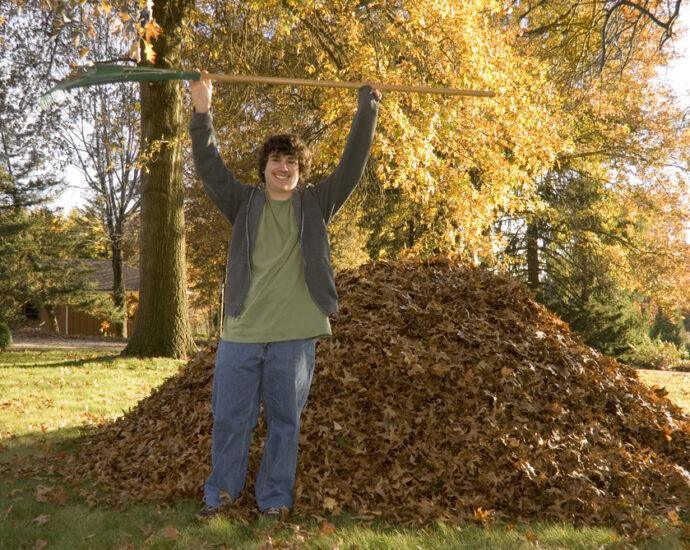Spending time outdoors and engaging in yardwork offers numerous health benefits, from physical exercise to mental relaxation. However, it can also expose individuals—particularly men who often take on physically demanding outdoor tasks—to various allergens that can trigger allergic reactions. This article explores some of the common allergies men may experience while tending to their yards, the potential symptoms, and practical ways to mitigate these effects.
Page Contents
Understanding Allergies in the Context of Yardwork
An allergy is the immune system’s exaggerated response to typically harmless substances. During yardwork, individuals are exposed to multiple allergens that can trigger reactions ranging from mild discomfort to severe health issues. For many, seasonal changes may intensify symptoms, especially when allergens are abundant.
Common Allergens Encountered During Yardwork
- Pollen Allergies
Many types of pollen—from grasses, trees, and weeds—are prevalent in outdoor environments, particularly during spring and early summer. Men who engage in activities such as mowing the lawn, trimming hedges, or planting may inhale airborne pollen particles. This exposure can lead to symptoms of allergic rhinitis (commonly known as hay fever), including sneezing, nasal congestion, itchy eyes, and even asthma in sensitive individuals. - Mold Spores
Moist environments, especially after rainfall, promote the growth of mold. Fungi thrive on decaying organic matter found in mulch, fallen leaves, or damp soil. Inhaling mold spores or coming into direct contact with mold can provoke respiratory issues and skin irritations. Men working in gardens or near compost piles might be particularly susceptible. - Insect Allergies
Yardwork often involves encounters with various insects, such as bees, wasps, and mosquitoes. While many people may experience minor discomfort from insect stings or bites, some individuals can develop more serious allergic reactions. Symptoms may include localized swelling, redness, and in severe cases, anaphylaxis—a life-threatening response that requires immediate medical attention. - Contact Dermatitis from Plants
Handling certain plants—most notably poison ivy, poison oak, or poison sumac—can cause contact dermatitis. This condition leads to red, itchy, and inflamed skin. Even individuals with no previous sensitivity can develop a reaction after exposure, and the severity may vary with repeated contact. - Dust and Chemical Allergies
Yardwork can stir up dust, which may contain allergens such as mold spores, pollen, or even chemical residues from fertilizers and pesticides. Inhaling these particles can trigger respiratory issues and allergic reactions, particularly in those with pre-existing conditions like asthma.
Recognizing Symptoms
The symptoms of yardwork-related allergies can vary widely, depending on the allergen and the individual’s sensitivity. Common signs to watch for include:
- Respiratory issues: Sneezing, coughing, wheezing, shortness of breath, and nasal congestion.
- Skin reactions: Redness, itching, rashes, or blisters, especially after contact with allergenic plants.
- Eye irritation: Red, watery, or itchy eyes.
- Systemic reactions: In cases of severe insect sting allergies, symptoms may progress to include swelling of the face or throat, dizziness, or anaphylactic shock.
Recognizing these symptoms early is crucial for effective management and treatment.
Preventative Measures and Management Strategies
- Protective Clothing:
Wearing long sleeves, gloves, and even a mask can help reduce skin contact with allergens and limit inhalation of pollen, dust, or mold spores. - Timing Your Yardwork:
Scheduling outdoor activities when pollen counts are lower—typically after a rainstorm or early in the morning—can help minimize exposure. - Medication:
Over-the-counter antihistamines, nasal sprays, or eye drops can relieve mild allergic reactions. Individuals with a history of severe reactions should discuss the possibility of carrying an epinephrine auto-injector with their healthcare provider. - Cleaning Up After Yardwork:
Showering and changing clothes immediately after finishing yardwork can help remove allergens from the skin and hair, reducing the risk of prolonged exposure. - Home Environment Adjustments:
Regularly cleaning and using air purifiers indoors can help mitigate the overall allergen load brought in from outdoor activities.
Conclusion
While yardwork is an excellent way to maintain physical fitness and mental well-being, it is important for men—and anyone who spends time outdoors—to be aware of the potential allergenic hazards. By understanding common allergens such as pollen, mold, insect venom, and plant irritants, and by taking proactive measures, one can enjoy the outdoors while minimizing the risk of allergic reactions. For those experiencing persistent or severe symptoms, consulting a healthcare provider for personalized advice is always a wise course of action.
Embracing preventive practices not only enhances safety but also ensures that the benefits of spending time in nature are not overshadowed by the discomfort of allergies.
READ MORE: Allergy: Your Body’s Red Flag
Sources:
https://healthsurgeon.com/health/grass-pollen-allergy/
https://www.aaaai.org/tools-for-the-public/conditions-library/allergies/outdoor-allergens-ttr
https://www.aspireallergy.com/blog/gardening-ragweed-grass-allergy
